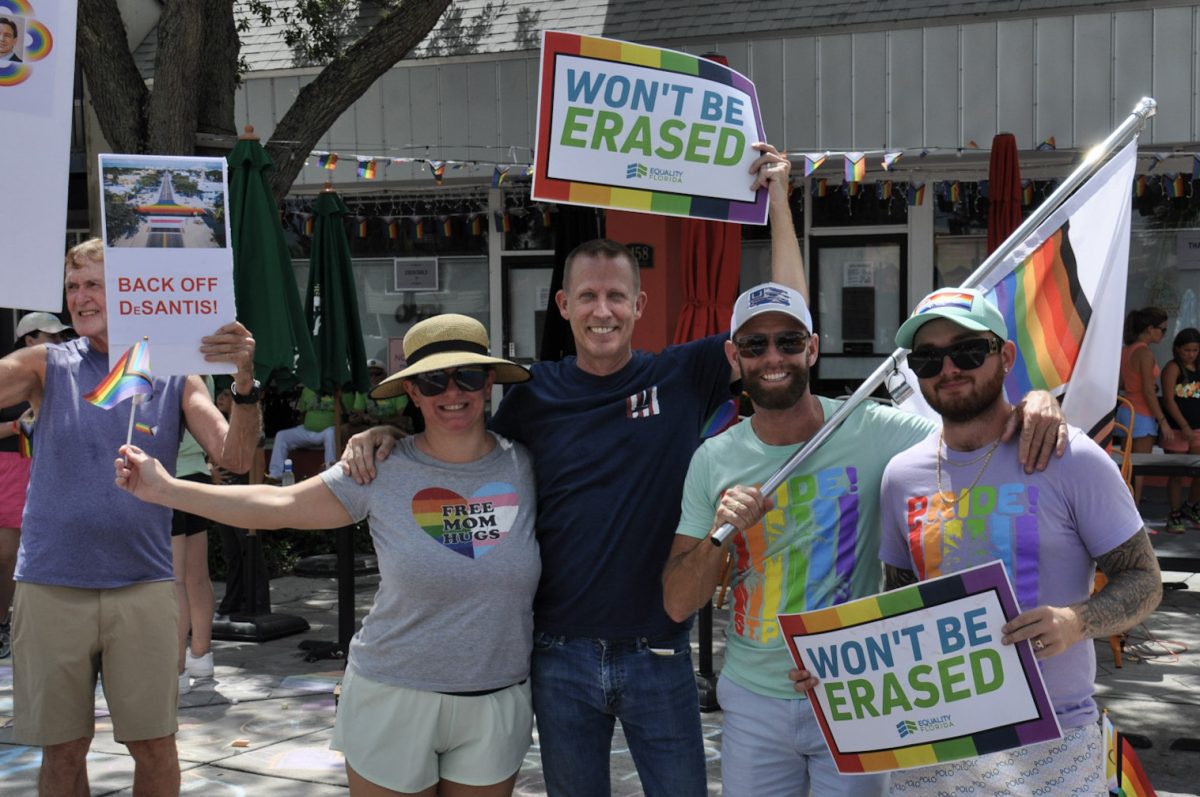On the side of nearly every building, the murals of downtown St. Pete reflect the landscape of the city with waves of color, inspiring imagery, and a message.
However, St. Pete’s artistic landscape has recently lost color. Five prominent St. Pete street murals have been removed as of Sept. 2, including the Crossway Crux Mural, the Black History Matters Mural, the Fluid Structures Mural, the Common Ground Mural, and the Progressive Pride Mural.
The Florida Department of Transportation (FDOT) deemed street murals’ effects on incoming traffic unsafe, demanding their removal. Additionally, FDOT Assistant Secretary Will Watts stated that social, political, and ideological messages in street art must be banned and paved over.
However, when U.S. Transportation Secretary Sean Duffy took to social media and said taxpayers “expect their dollars to fund safe streets, not rainbow crosswalks,” he revealed the true intentions behind the law.
“I was distraught, quite frankly,” said senior Sophia Dyer upon finding out the Progressive Pride Mural had been painted over. “I don’t really understand a need for that. I’d like to know what the government was trying to do.”
However, this paving is not just in St. Pete. Orlando paved over the rainbow crosswalk outside of the Pulse nightclub on Aug. 20 — a mural that served as a memorial to honor the 49 people killed in a 2016 hate crime shooting. In response to the mural’s destruction, protestors filled in the empty crosswalk with a chalk rainbow.
Protests with similar messages have begun in St. Pete. On Sept. 1, protestors gathered at the Progressive Pride Mural in the Grand Central district. They surrounded buckets of chalk supplied to the community by Pastor Andy, who was arrested for kneeling and praying on the Black History Matters Mural during its removal.

With music playing and chalk flowing freely, many community members came together to show their support despite the burning sun. “Joy is the biggest form of resistance, the one thing that they cannot erase, they cannot pave over, they cannot take away,” activist and speaker Tamara Leigh said.
Protester and comedic activist Cole “Coley” Thomas criticized the removal of pride flags as a distraction from the more pressing political issues at hand. He believes Florida’s government is “just ripping old wounds to distract us. We’ll get back to the other side, but it’s gonna take a minute.”
St. Pete has always been a haven for the LGBTQ+ community, as well as an incredibly artistic community, which is why the blow created by these removals hit so hard.
“This is only a symbol of what they are erasing in St. Pete and in the state of Florida,” speaker and St. Pete activist Rachel Covello said when speaking about the Progressive Pride Mural.
The city cannot refuse to pave over these murals, as FDOT informed St. Pete that it would face penalties, such as a loss of state funding. Mayor Ken Welch reluctantly complied with the orders of removal.
To many members of the community, this mural isn’t simply just a rainbow, but an identity and an acknowledgement of who they are. “When I see rainbows, I see my brother. That’s why this mural is so important to me,” protestor Terri Buckle said. She and her brother used to attend pride parades together every week until 1994, when he died of AIDS.
Buckle still remembers the intensity of the epidemic, recalling “burying a new person every week.”
Now, when looking at the dark black layers of pavement where these murals once shone, protesters don’t let these setbacks divide the community they represent. “We are here regardless of whether our rainbows disappear,” Covello said.